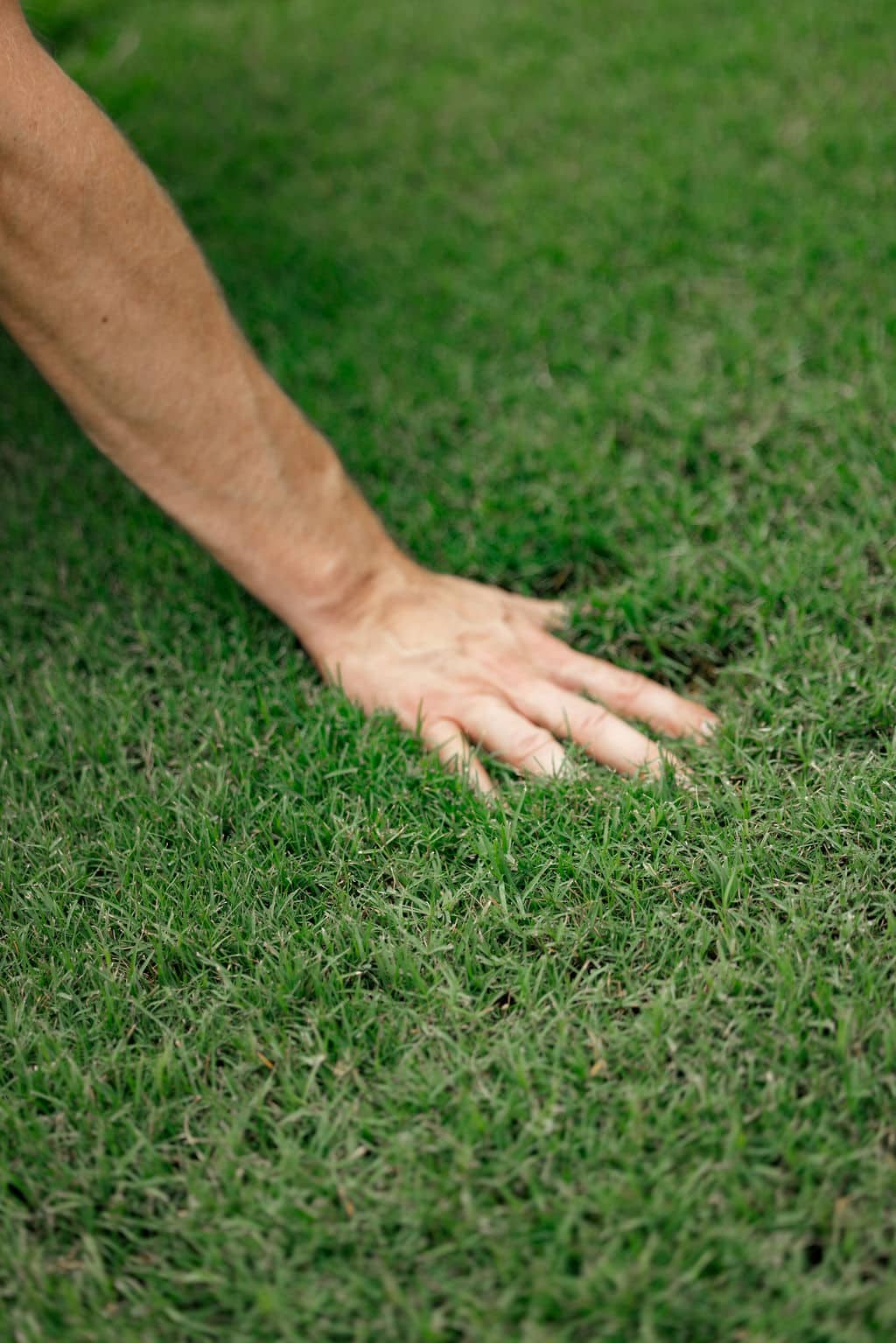Leaf piles, bonfires, college football, and grill smoke. A warm, fuzzy flannel shirt and the excitement of imminent holidays. Only one feeling tops those for some people: parking their lawnmower for the last time as fall sets in. Since each yard is unique, the timing is different for everyone. Let’s talk about when the time to put away your lawnmower is right for you.
When Do Bermuda and Zoysia Grasses Go Dormant?
After a few hard frosts and lawns go dormant, most people can put their lawnmowers away until spring. The icy frost freezes the space between leaf cells, breaking cell walls, and killing leaves while leaving the roots unharmed. It’s at this point when our bermudas and zoysias go from a pale green to tan. Dormancy is how our warm season turfs cope with freezing weather. Instead of dying when freezing weather arrives, the grass stops producing top growth until warmer weather and growing conditions return. A fully tan yard is only the final step of a process that starts much earlier in the fall.
Keeping up with mowing your grass during July and August can seem almost impossible at times, but you may notice this slow down toward the middle of September as days shorten and night-time temperatures cool. This triggers our bermuda and zoysia grasses that it’s time to slow down and store some energy in preparation for dormancy. This isn’t the time to stop mowing, however. At this point, increase your mowing heights a notch and continue frequently mowing to make sure you don’t create accidental injury that your turf won’t recover from before dormancy.
Lawnmowers Can Be Useful for Fall Cleanup
While rakes and leaf blowers are fantastic tools, mulching and relocating leaves, straw, and tree debris can be expedited with the use of your trusty lawn mower. As our turfs slow down in preparation for dormancy, the deciduous trees in our yards begin to reveal the orange, red, and yellow colors of fall. Once they fall, cleaning them up is important for the health of your dormant turf, weed control, and treatment scheduling.
Matted leaves can create fungus and will contribute to thinness, which allows voids that weeds may take advantage of. A lawn that’s too densely covered in leaves also can’t be treated. Fall treatments like pre-emergents depend on uniform application to create the consistent weed control barrier we desire. Leaf and debris cover compromises that uniformity. That cover can also deflect dry treatments like fertilizer and limestone, as well as block sight of weeds that may have circumvented treatment and germinated beneath them.
So When Can I Put My Lawnmower Away?
You can put your lawnmower away when you’ve determined it’s no longer useful until spring. Once your turf is dormant, it won’t grow again until the warmer, longer days of spring return. Technically speaking, it won’t need to be cut until then. If you have deciduous trees on your property, though, using your mower on a setting higher than your turf can be a handy tool to clear those fallen leaves.
Here are a few questions to ask that can help you decide when to put your mower away until spring:
- Is my bermuda or zoysia completely tan and dormant?
- Are the deciduous trees in my yard finished dropping leaves?
- Is my yard clear of the leaves, straw, and debris that came out of my trees?
If the answer to each of those questions is yes, it’s time to winterize that mower, park it, and enjoy a cup of your favorite warm beverage inside!
Still Have Questions? Ask the Experts!
If you have questions or concerns about fall lawn health, cultural practices like mowing, or the treatments we perform during the fall and winter seasons, we’re always glad to talk. Each lawn is different, and each treatment is unique. We are always happy to review this process with our clients. Text or call us at 678-831-6343, or email us at info@naturesturf.com, where we can help answer any additional questions you may have.








